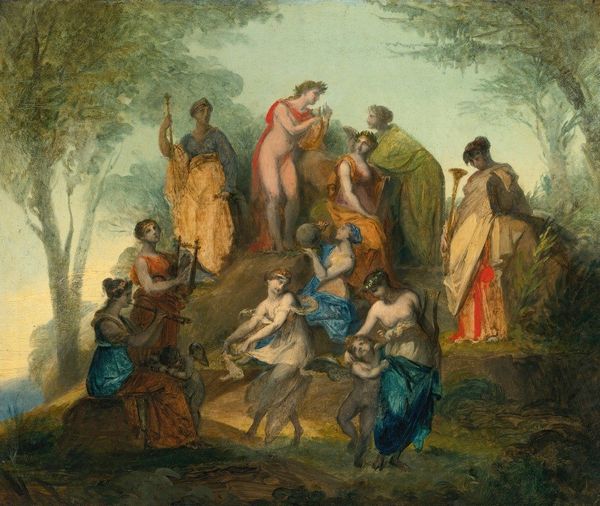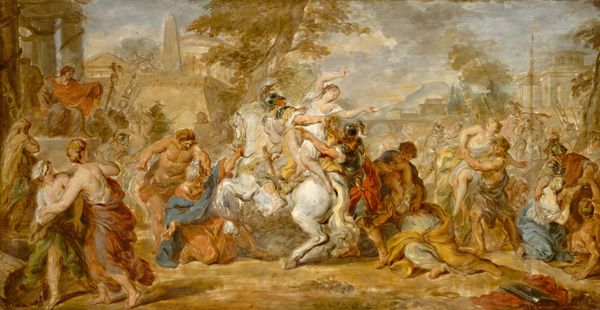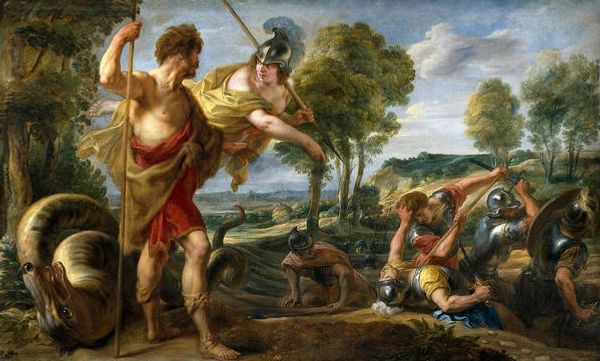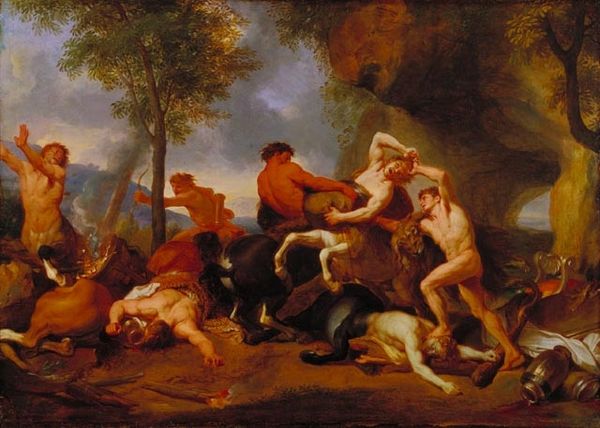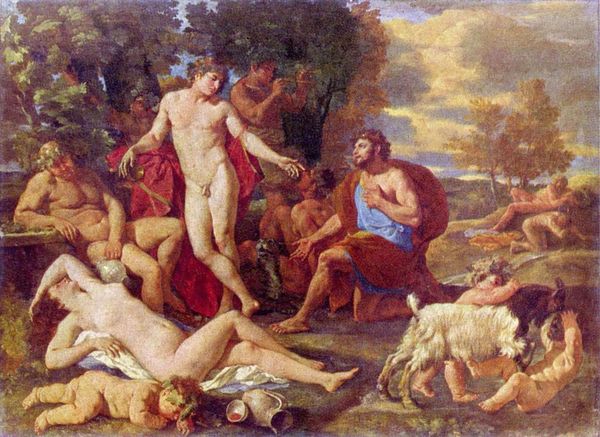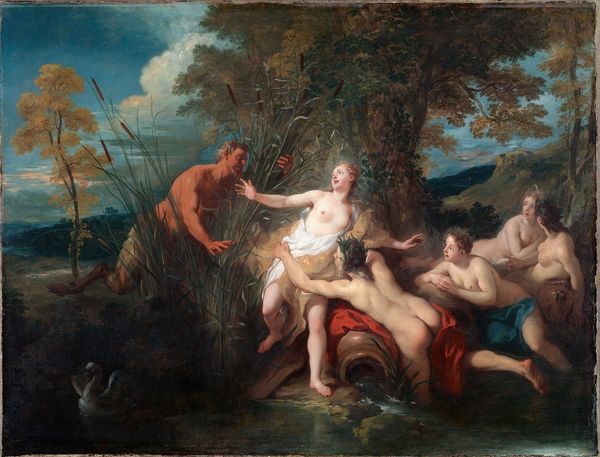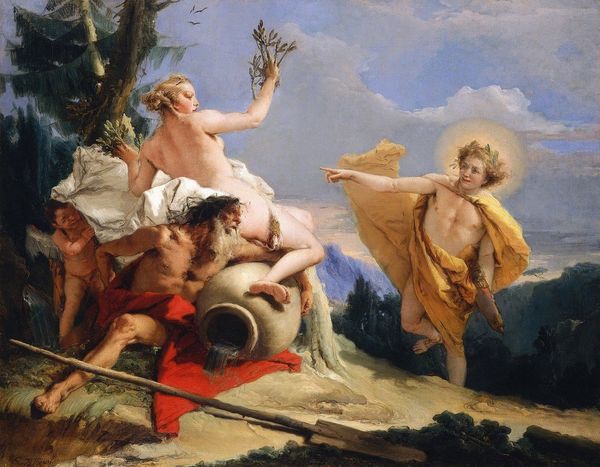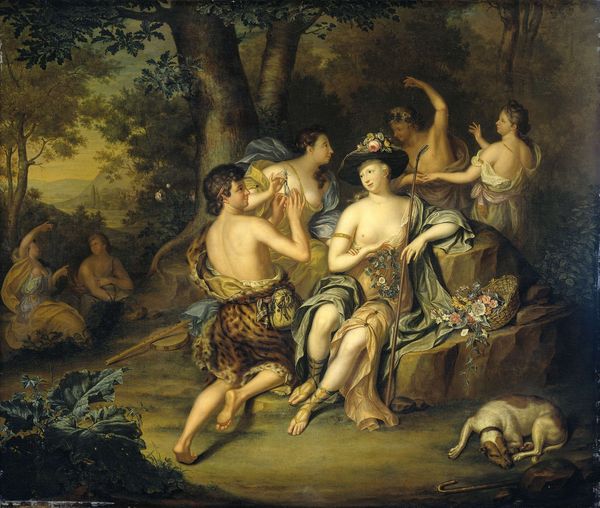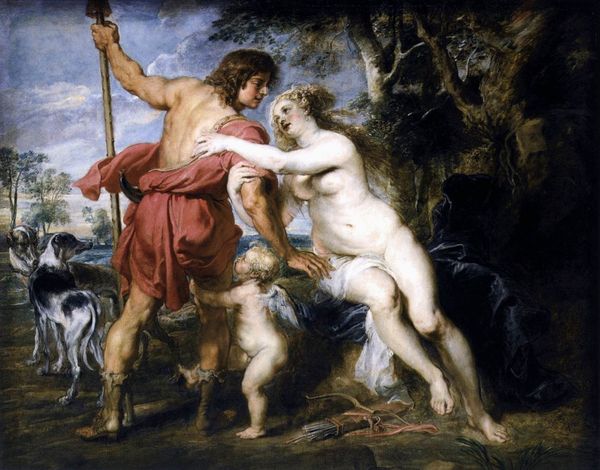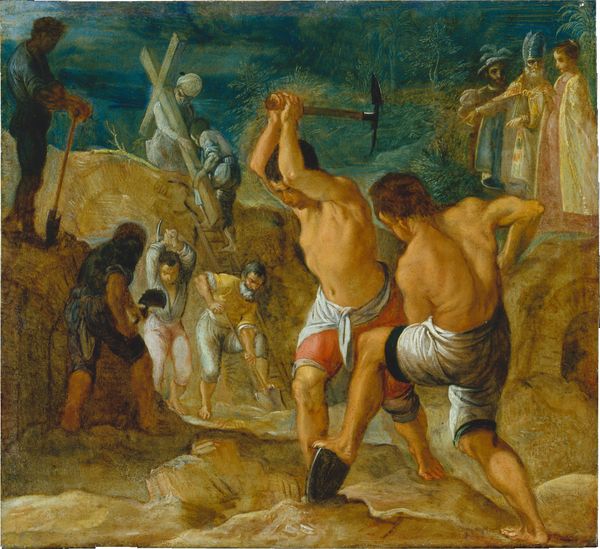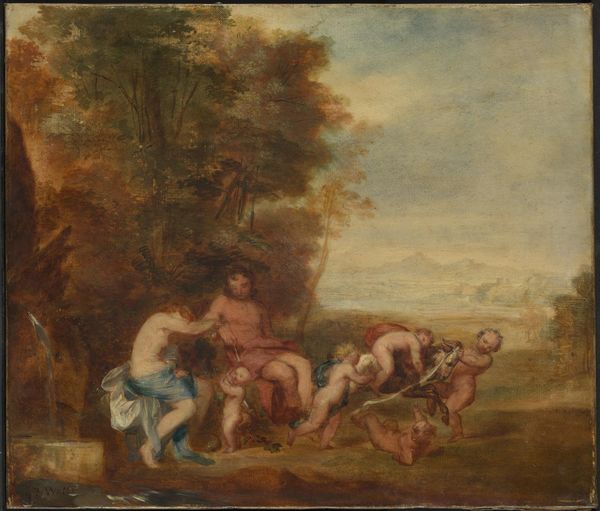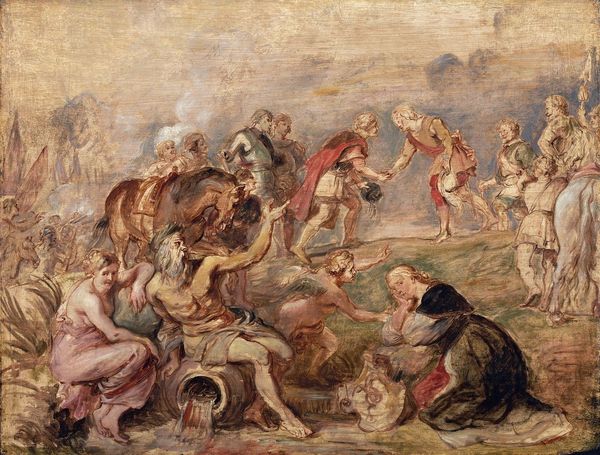
Dimensions: support: 298 x 349 mm frame: 416 x 466 x 68 mm
Copyright: CC-BY-NC-ND 4.0 DEED, Photo: Tate
Curator: Here we have George Frederic Watts's "Nymphs and Satyrs," currently housed at the Tate. What strikes you first about this piece? Editor: The earthiness. It's quite a contrast, this bacchanal rendered in such muted tones. I immediately think of the pigments available at the time, and how Watts is working with his material reality. Curator: Indeed. It’s interesting to consider how Victorian ideals shaped Watts’s interpretation of classical mythology. Note the clear influence of the Elgin Marbles in the figures’ poses. Editor: Absolutely. And what about the labor? The physicality of producing such a piece, layering these colors, especially given the social position of artists at the time... Curator: Watts occupied a unique position within the Victorian art world, moving between establishment and avant-garde circles. His classical subjects gave him a certain prestige. Editor: It is always a question of how the making shapes and is shaped by the society around it. Curator: Ultimately, the painting reflects both Watts's ambition and the complex cultural values of his era. Editor: I am left thinking about the material conditions which helped produce such a painting.
Comments
tate 7 months ago
⋮
http://www.tate.org.uk/art/artworks/watts-nymphs-and-satyrs-n04557
Join the conversation
Join millions of artists and users on Artera today and experience the ultimate creative platform.
tate 7 months ago
⋮
Nymphs were female deities who lived either in the waters of the earth or on land. They were immortal and were generally thought of as young, beautiful virgins. Satyrs were demigods of the land with the heads of men but with the feet and legs of goats. They were most often in the company of Bacchus, the god of wine, and were leading participants in his riotous and lascivious orgies. Here, the satyr plays his pipe for the Bacchanalian dance. Gallery label, January 1990
